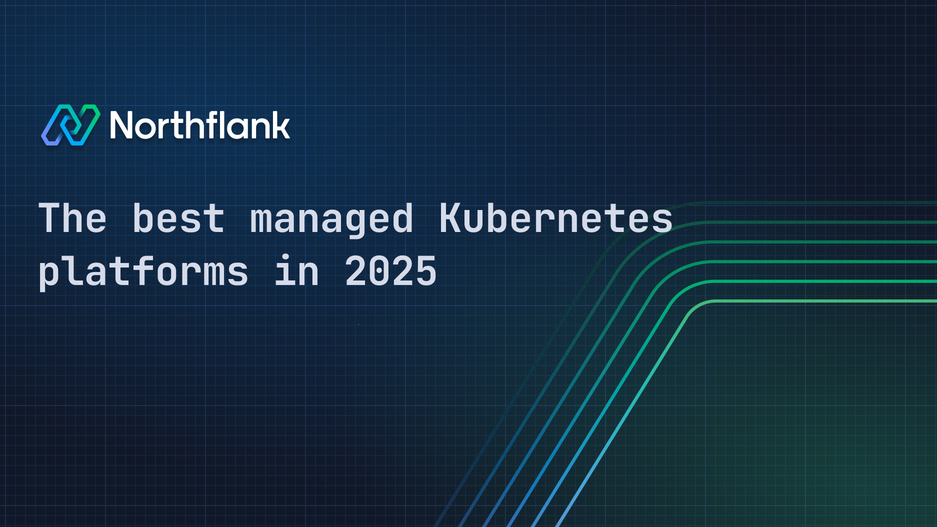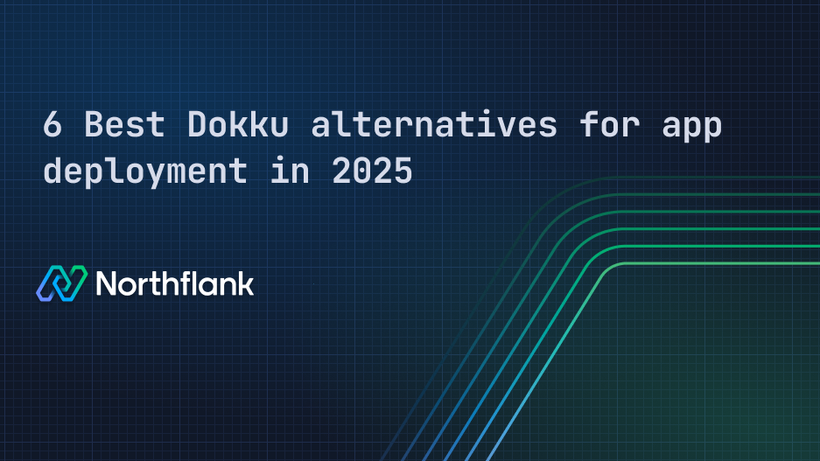

Best managed Kubernetes platforms in 2025: What to choose and why It matters.
If you’ve worked with containers, you already know the power they bring. Fast deployments. Consistent environments. Scalability on demand. But as teams grow and architectures get more complex, raw Kubernetes quickly becomes... not enough. That’s where managed Kubernetes platforms come in.
A great managed Kubernetes platform doesn’t just help you run clusters. It simplifies your workflows, adds automation, boosts visibility, and lets you focus on shipping software, not managing infrastructure.
In this guide, we’ll break down what a Kubernetes platform actually is (and what it isn’t), why it matters more than ever in 2025, and how to choose the right one for your team. We'll look at industry leaders like Rancher and OpenShift, and explore how platforms like Northflank are rethinking the Kubernetes experience from the ground up.
Looking for the best managed Kubernetes platform for your team? Here’s a quick roundup of the top contenders in 2025:
- Northflank – A developer-first Kubernetes platform with built-in CI/CD, databases, preview environments, and Git-based workflows. Abstracts away Kubernetes complexity without sacrificing control.
- Amazon EKS – Fully managed Kubernetes service tightly integrated with AWS.
- Google Kubernetes Engine (GKE) – Battle-tested platform with strong autoscaling and AI/ML integrations.
- Azure AKS – Microsoft’s managed Kubernetes with solid enterprise support and Azure-native features.
- Red Hat OpenShift – Enterprise-grade platform focused on compliance, security, and hybrid deployments.
- Platform9 – SaaS-managed Kubernetes for on-prem, hybrid, and edge environments.
- Rancher – Open-source, multi-cluster Kubernetes management for hybrid cloud strategies.
- VMware Tanzu – Kubernetes built into VMware’s ecosystem for large enterprises.
Keep reading to dive deeper into each platform, compare features, and figure out which one fits your use case.
A managed Kubernetes platform is more than just Kubernetes installed on some servers. It’s an opinionated stack that integrates Kubernetes with networking, security, CI/CD, monitoring, logging, and developer tooling. Think of it as a complete operating system for running cloud-native applications.
Kubernetes itself is powerful, but it was never designed to be developer-friendly. It’s an orchestration engine, not a product. It assumes you have the time, expertise, and tools to stitch everything together. In that sense, Kubernetes is a foundation — a platform for platforms — not something most teams should be using raw.
That’s where managed Kubernetes platforms come in. They package Kubernetes with everything you actually need to ship software: workflows, automation, observability, security, and more. Done right, a platform removes the complexity of managing infrastructure and lets you focus on building.
Not all managed Kubernetes platforms are created equal. Most of them promise flexibility, power, and scalability — but leave you to wire everything together yourself. A strong platform shouldn’t just host your containers; it should remove friction from your entire workflow.
Here’s what actually matters when you’re evaluating managed Kubernetes platforms in 2025:
-
Fast, intuitive developer experience
Can your team go from Git push to live deployment without writing YAML or waiting on infra tickets? The best platforms prioritize developer velocity — with clean UIs, powerful APIs, GitOps support, and minimal ceremony.
-
Built-in automation and CI/CD
Look for native CI pipelines, automatic preview environments, and seamless promotion between dev/staging/prod. You shouldn’t have to duct-tape half a dozen tools together just to ship a change.
-
Scalability without the stress
Whether you're running a single app or a platform with hundreds of services, your infrastructure should scale with you — automatically, efficiently, and without surprises.
-
Security that doesn’t slow you down
RBAC, secrets management, network isolation, policy enforcement — all should come baked in. Bonus points if the platform gives you sane defaults out of the box instead of a security checklist you have to manually implement.
-
Observability, not opacity
Logs, metrics, traces — right where you need them. In one place. Not hidden behind a dozen dashboards or paywalled integrations.
-
Smart pricing and resource usage
You want predictable billing, not cloud cost horror stories. Look for platforms that help you use resources efficiently, not just burn compute.
-
Real support, real docs
Platforms should be self-service when you want it, and human when you need it. Great documentation matters. So does knowing someone has your back when things break.
Northflank gives you all the power of Kubernetes—container orchestration, service discovery, and autoscaling—but wraps it in a developer-first experience.
No need to manage YAML files by hand. With Git-integrated workflows, built-in CI, automatic SSL, and managed databases, Northflank helps you go from code to running service in minutes. It also handles the heavy lifting like horizontal scaling, persistent storage, and background workers with a clean, intuitive UI and APIs.

Key features:
- Kubernetes-powered, full-stack platform
- Deploy containers, databases, and scheduled jobs
- Bring your own cloud (AWS, GCP, Azure, etc.)
- CI/CD integration, real-time logs, with a developer-friendly and consistent experience across UI, CLI, API, and GitOps
- GPU support for AI workloads
- Automatic preview environments and seamless promotion to dev, staging, and production
Best for:
- Dev teams building APIs, microservices, and containerized web apps
- SaaS products needing multi-service architectures
- Teams looking for a fast, clean alternative to older, more rigid platforms like Rancher
Potential drawbacks:
- Highly experienced DevOps teams might find it restrictive compared to directly managing raw Kubernetes clusters. It’s a fine balance between ease of use, flexibility, and customization; that line differs for every organization.
See how Weights company uses Northflank to scale to millions of users without a DevOps team
For teams that prefer fully managed Kubernetes services, Amazon Elastic Kubernetes Service (EKS), Google Kubernetes Engine, and Azure Kubernetes Service (AKS) provide scalable, managed Kubernetes clusters with seamless integration into their respective cloud ecosystems.

Key features:
- Managed Kubernetes clusters with automated updates and security patches.
- Integrated cloud-native services for storage, networking, and monitoring.
- Reduced operational overhead compared to self-managed Kubernetes.
Potential drawbacks:
- Deeply tied to their respective cloud ecosystems, making multi-cloud strategies more complex.
- Limited customization compared to self-managed Kubernetes.
OpenShift is a comprehensive Kubernetes platform developed by Red Hat. It’s designed for hybrid and multi-cloud deployments, offering strong security, compliance features, and enterprise support.

Key features:
- Full-stack Kubernetes with integrated developer tools.
- Native CI/CD with Tekton and support for pipelines.
- Robust RBAC, policy enforcement, and compliance capabilities.
- Deep integration with Red Hat Linux and other enterprise tools.
Potential drawbacks:
- Complex to set up and maintain without dedicated platform teams.
- Can be resource-intensive and expensive.
Platform9 is a managed Kubernetes solution designed for on-premises, edge, and hybrid cloud environments. Unlike fully cloud-hosted Kubernetes services, Platform9 allows organizations to run Kubernetes anywhere while benefiting from a SaaS-based management model.

Key features:
- Fully managed Kubernetes with a 99.9% uptime SLA.
- Works across on-prem, hybrid, and edge environments.
- Zero-touch upgrades and automated operations.
- Open-source foundation with no vendor lock-in.
Potential drawbacks:
- Smaller market share compared to OpenShift, which may affect long-term support.
- Reliance on a SaaS-based model may not be suitable for some enterprises.
Rancher is an open-source Kubernetes management platform that simplifies deployment and administration, especially in multi-cluster and multi-cloud environments. It provides centralized cluster management, making it ideal for enterprises running Kubernetes across multiple providers.

Key features:
- Easy cluster provisioning and lifecycle management.
- Built-in security, monitoring, and policy management.
- Supports on-premises, hybrid, and multi-cloud environments.
Potential drawbacks:
- Requires some Kubernetes expertise to configure and manage.
- May not have as extensive enterprise support as OpenShift.
VMware Tanzu is an enterprise-grade Kubernetes and application modernization platform. It offers deep integration with VMware’s existing infrastructure, making it a strong choice for companies already using VMware products.

Key features:
- Enterprise-level security and compliance controls.
- Seamless integration with VMware vSphere and other VMware tools.
- Multi-cloud Kubernetes support, including on-premises and cloud deployments.
Potential drawbacks:
- Best suited for VMware environments, making it less ideal for teams using other infrastructure solutions.
- Licensing costs may be high for some organizations.
Not every team has a platform engineering org, and not everyone wants to spend time managing clusters. When choosing a Kubernetes platform, think about what your team actually needs:
-
Are you looking for speed or control?
Platforms like OpenShift and Rancher offer deep configurability, but require heavy setup and ongoing ops. If you just want to deploy services and scale fast, something simpler might be better.
-
How much should your developers need to learn?
The best platforms let devs ship code without needing to know how Kubernetes works. Northflank was built with that in mind — powerful under the hood, but easy on the surface.
-
Do you want to be tied to one cloud?
GKE, EKS, and AKS work well within their clouds. But if you’re thinking multi-cloud, hybrid, or want more flexibility, tools like Northflank give you portability without the lock-in.
-
Can it scale with your team?
Northflank is great for small teams and startups, but it is also built to handle serious scale. You can start fast and grow without re-platforming.
In short: pick the platform that meets your team where they are — and grows with you. If you want Kubernetes power without the Kubernetes complexity, Northflank is one of the few platforms that actually delivers on that promise.
Kubernetes isn’t going anywhere — but the way we use it is changing fast.
The future isn't about managing clusters. It’s about not needing to.
We’re moving toward platforms that abstract away infrastructure entirely, while still giving teams the flexibility to scale, secure, and ship with confidence. Think:
- No YAML. No manual provisioning. No waiting on DevOps.
- Security and observability baked in, not bolted on.
- Smart defaults, self-healing systems, and environments that just work.
This is where Northflank is already operating — pushing Kubernetes into the background so teams can focus on building. As AI, edge, and multi-cloud architectures evolve, the winners in this space will be the platforms that stay invisible until they’re needed, and intuitive when they are.
Northflank isn’t trying to give you "a better dashboard for Kubernetes."
It’s building the platform you’ll wish you had when Kubernetes disappears behind the scenes entirely.
Kubernetes changed how we build and run software. But managing Kubernetes? That’s still a burden for most teams.
That’s why managed Kubernetes platforms matter. They turn raw orchestration power into something usable, scalable, and developer-friendly. From enterprise-grade setups like OpenShift to cloud-native offerings like EKS and GKE, the ecosystem is full of options, but many still expect you to do too much heavy lifting.
Northflank takes a different approach. It delivers the power of Kubernetes without the complexity, giving your team a fast, modern developer experience without sacrificing flexibility or control. From built-in CI/CD and preview environments to autoscaling, background workers, and managed databases, it’s everything you need to ship fast and scale with confidence.
If you're tired of fighting YAML, chasing logs, or waiting on infra tickets, it’s time to try something better. Try Northflank — the fastest way to ship with Kubernetes, minus the Kubernetes pain.
What is a managed Kubernetes platform?
A managed Kubernetes platform is a complete environment that integrates Kubernetes with CI/CD, observability, security, and developer tooling to streamline app deployment and operations.
Is Kubernetes a platform or a tool?
Kubernetes is a tool—an orchestration engine. A managed Kubernetes platform builds on top of it with additional tools, integrations, and automation.
What are the top managed Kubernetes platforms in 2025?
Northflank, GKE, EKS, AKS, OpenShift, Rancher, and Platform9.
How secure is Kubernetes?
It can be very secure, but it requires proper configuration. Managed platforms often come with best practices pre-applied.
How does Kubernetes help with scalability?
Kubernetes automatically scales applications based on CPU/memory usage or custom metrics. It can handle millions of requests with the right setup.

